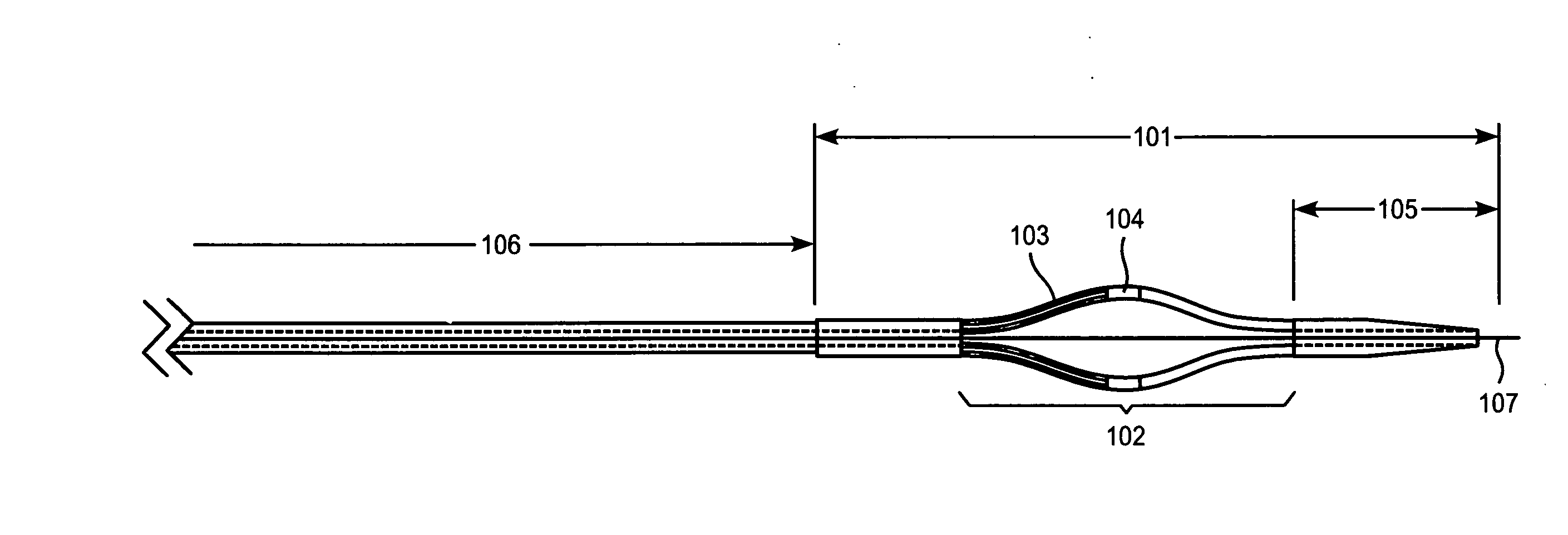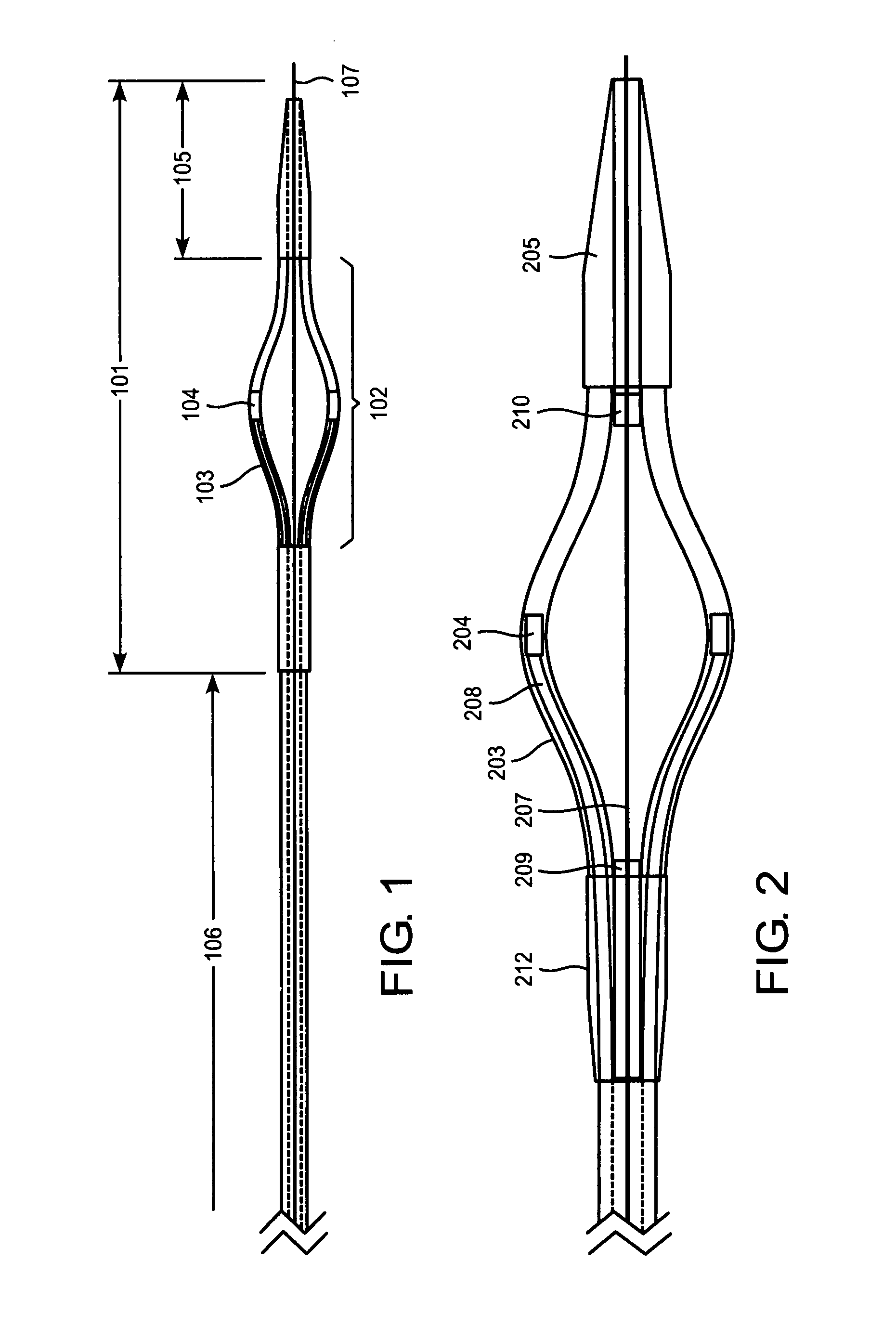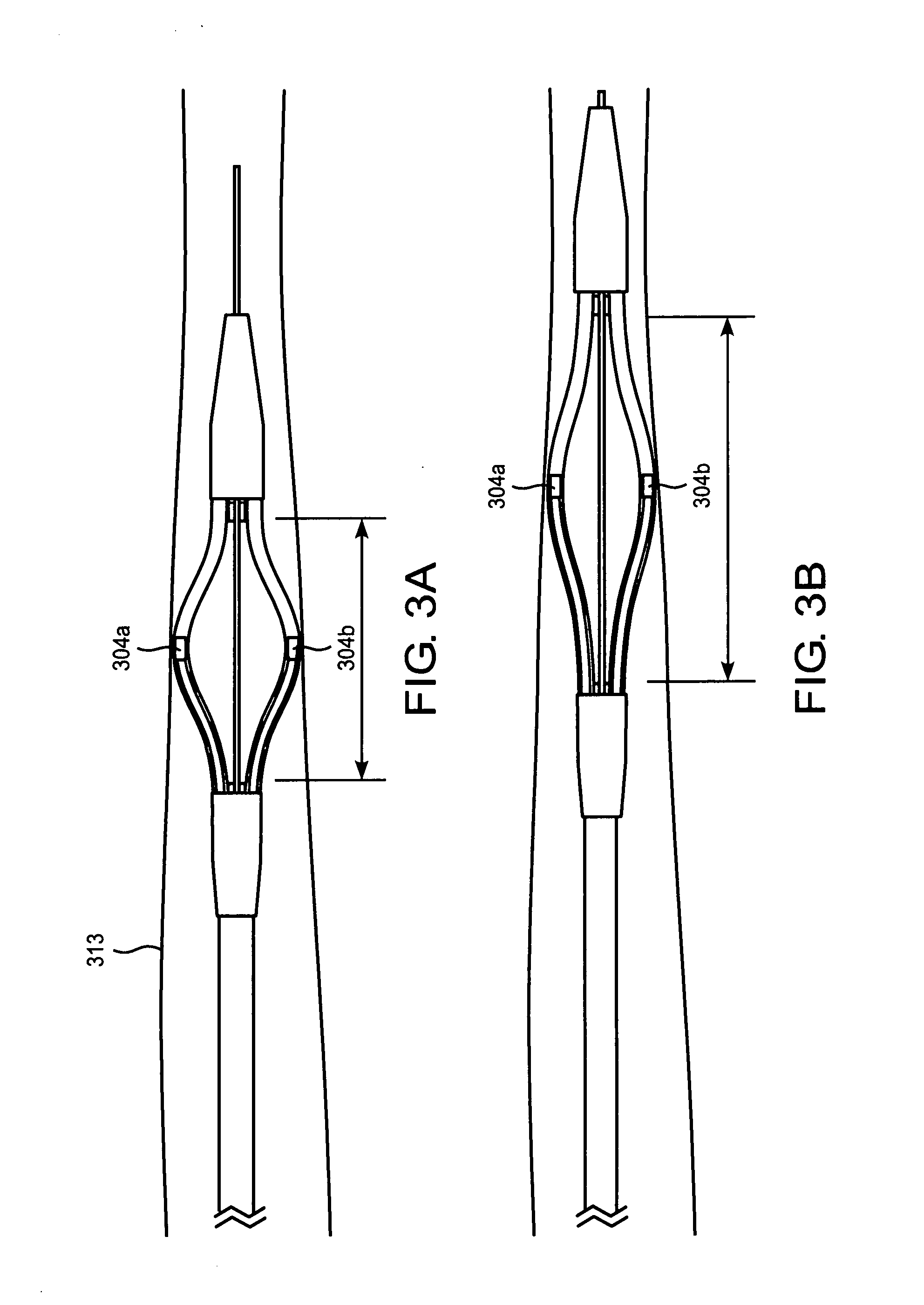Conformable tissue contact catheter
a tissue contact and catheter technology, applied in the field of sideviewing catheter probes, can solve the problems of limited flexibility, unsafe radial force on the vessel, and limitations of the catheter style known in the art, and achieve the effect of favorable compression behavior
- Summary
- Abstract
- Description
- Claims
- Application Information
AI Technical Summary
Benefits of technology
Problems solved by technology
Method used
Image
Examples
Embodiment Construction
[0032] The invention provides basket-style catheter probes that are configured to automatically radially expand or contract in response to widening or narrowing of a body lumen so that contact with the lumen wall is maintained as the probe is traverses the lumen. The basket segment of the probe has a lumen that accommodates a guidewire through its length and includes a proximal end that remains static with respect to the catheter to which it is attached and a distal end that slideably surrounds the guidewire. Positioned between, and attached, to the each of the proximal and distal ends are probe arms that have an outward radial bias so that their tendency is to flex toward a lumen wall. The slideable distal end of the basket segment permits radial expansion and contraction of the probe arms by way of changes in the distance between the proximal and distal ends of the probe as the probe travels within a lumen.
[0033] The basket-style probe assemblies of the invention provide for the ...
PUM
 Login to View More
Login to View More Abstract
Description
Claims
Application Information
 Login to View More
Login to View More - Generate Ideas
- Intellectual Property
- Life Sciences
- Materials
- Tech Scout
- Unparalleled Data Quality
- Higher Quality Content
- 60% Fewer Hallucinations
Browse by: Latest US Patents, China's latest patents, Technical Efficacy Thesaurus, Application Domain, Technology Topic, Popular Technical Reports.
© 2025 PatSnap. All rights reserved.Legal|Privacy policy|Modern Slavery Act Transparency Statement|Sitemap|About US| Contact US: help@patsnap.com



